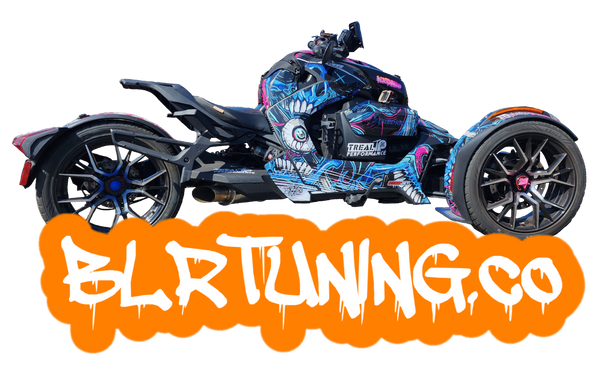CVT BELT MAINTENANCE AND UNDERSTANDING THE CVT - Continuously Variable Transmission
CVT Belt Maintenance: What You Need to Know
Understanding that the CVT (Continuously Variable Transmission) belt is a wear item is crucial for proper maintenance. This means that the belt will eventually wear out; how long it lasts can vary widely—from as little as 100 miles to over 12,000 miles or more, depending on usage conditions. Unfortunately, there is no definitive way to predict the exact lifespan of your belt.
However, based on our experience and feedback from customers, we can confidently state that the Dynojet Power Series belts generally last longer than the standard factory belts. If you notice any of the following symptoms, it is likely time to replace your CVT belt:
- Loss of top speed
- The engine revs up, but the bike doesn’t accelerate as it should
- The bike requires more RPMs to move from a standstill
If you observe any of these signs, it's advisable to assume that your belt needs replacement. Of course, we recommend doing your own research or consulting a local expert if you're uncertain. In our experience, when these symptoms are present, it is usually due to a worn or failing CVT belt.
Regardless of whether you’re using a stock factory belt or a Dynojet Power Series belt, if these issues occur, it’s likely that the belt has reached the end of its lifespan and should be replaced. Ignoring these signs can lead to more serious damage, such as the belt exploding and causing significant harm to the transmission housing—a far more costly repair than simply replacing the belt.
It’s also important to note that CVT transmissions require regular maintenance to function correctly, particularly as the power output of your vehicle increases. The more horsepower your vehicle produces, the more frequent the maintenance required for the CVT transmission setup. This is why we recommend using a Dynojet Power Series belt, not just for stock machines but especially if your bike has been tuned or is running aftermarket parts like exhaust or intake systems. These belts are designed to handle more power and torque, and they typically outlast the factory belts.
In a CVT transmission, alongside the belt, there are several other critical wear components that require periodic replacement as part of routine maintenance. These include rollers, springs, weights, and the helix. These components are essential in ensuring the proper operation and longevity of the CVT system.
Typically the CVT Belt is what wears out the quickest out of all the components in the CVT system. For these reasons if you are upgrading the power or riding hard. Upgrading the CVT belt to a DYNOJET POWER SERIES BELT is what we recommend.
If you ever hear any noise coming from the transmission that sounds like you're shaking a spray paint can or a knocking sound. That is typically the sound of a broken roller or a worn out roller. A broken or damaged helix or if the spring in the primary or the secondary is broken it can also make a knocking sound or a sound as if you are shaking a can of spray paint.
If the bike starts moving on its own, And you are not giving it the gas at the hand grip. This is the sign of a broken, or damaged roller or set of rollers. This would mean that the clutch is not letting go of the belt when it's supposed to. In this scenario apply the brake, pull over safely and shut the vehicle down. Do not attempt to start the vehicle back up and tell you have opened up the transmission housing and inspected everything. We have never seen a worn out CVT belt on the Can-Am Ryker cause this type of issue on its own. If a roller gets broken it can become as sharp as a razor blade. It can easily cut The CVT belt and shred the belt to pieces. In scenarios like this the belt was not the issue. The broken roller or rollers was the initial issue.
You should always practice inspecting everything in the transmission every single time you are working in the transmission area. If you are installing a new CVT belt whether it's a stock OEM belt or a Dynojet power series belt or a different brand of belt. You should always inspect everything. If anything looks out of order or misaligned or damaged. Seek some professional help and fix the issue before installing the new belt.
Usually when the CVT belt is worn out it will start slipping before it breaks in half. Running it at high RPM while it is slipping can cause it to snap in half. It is not uncommon for any brand of belt to just snap in half without any warnings or any signs of it wearing out. These are things that should all be noted and things that you should be aware of when dealing with a CVT belt driven transmission like what is found on the Can-Am ryker and many other CVT driven machines. A worn-out belt does not usually make any noise. If it does make a noise it would be a loud squealing sound.
There is a lot of moving parts in the CVT transmission. While we are giving you all of this helpful information. It should be noted that unexpected things can happen. You may experience something completely different than what is written on this page. This page is typed up by us based on our experiences and knowledge of them doing maintenance and working on the Can-Am ryker and a few other Can-Am ATV models that share the same or similar CVT belt driven transmission.
If you have any questions, feel free to contact us at blrtuning.tech@gmail.com
Here is a link to our CVT section of our website - https://www.blrtuning.co/collections/cvt-belts
